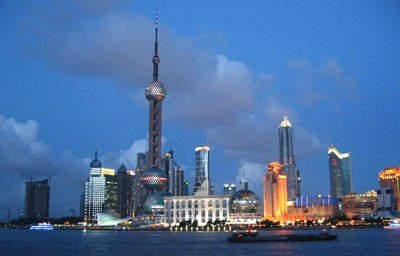
China is developing into the world’s major economic power. To succeed in its drive to be the centre of manufacturing it has a strong thirst for power. One of the big challenges for China is securing sufficient gas supplies for the next 25–30 years.
The Shanghai liquefied natural gas (LNG) project is one of many LNG receiving terminals currently being constructed around the Chinese coast to supply its natural gas to industrial / power companies and domestic customers.
Shanghai is a key energy supply project for transmitting LNG from Malaysia to the economic hub in east China. The project will supply approximately 1.1 million tonnes per year in the initial three years, and from 2012 it will rise to 3.03 million tonnes per year.
Shanghai LNG project development
The National Development & Reform Commission of China approved the project in December 2006 and this project, together with the west-to-east gas pipeline of China and the East China Sea gas project, will help fulfil Shanghai’s enegry demands, improve the efficiency of energy and cut emissions.
China’s gas market looks promising owing to the increasing use of natural gas. In the near future natural gas is expected to completely replace manufactured gas and there is a large number of LNG terminals being constructed to service this need.
In January 2007, CNOOC Gas and Power of China, a subsidiary of China National Offshore Oil Corporation, signed an agreement with Shenergy Group for the development of the Shanghai LNG terminal.
The two companies developed this project through the formation of a new company, Shanghai LNG Company.
CNOOC Gas & Power holds a 45% interest in the new company, while Shenergy Group owns the remaining 55%. (To date, CNOOC has entered four LNG deals in Guangdong, Fujian, Zhejiang and Shanghai.) The project required an investment of ¥7bn ($900m).
LNG project and supply
The Shanghai LNG project comprises a LNG dock, a receiving terminal and a subsea gas trunk line. The facility will ultimately have the capacity to receive six million tonnes of LNG per year.
The project is being carried out in two phases. Construction of the first phase of the terminal started in January 2007 and it was commissioned in 2009. Capacity for the first phase is 3.03 million tonnes per year.
Shanghai started receiving LNG from Malaysia beginning in October 2009; this will amount to 1.1 million tonnes per year over the first three years, increasing to 3.03 million tonnes per year in 2012 – the contract is for a period of 25 years.
The contract was signed by the Shanghai LNG and a subsidiary of Petronas, Malaysia’s national petroleum corporation, in October 2006.
This deal is one of the largest trade contracts ever agreed between China and Malaysia. The Malaysian company will supply 3.03 million tonnes under the long-term agreement. Malaysia LNG Tiga made the first shipment of 90,000m³ of LNG to the terminal in October 2009.
Petronas obtains natural gas supplies from the Bintulu region, one of the world’s largest LNG production bases in eastern Malaysia. It boasts an annual output of 23 million tonnes.
Construction of the Shanghai LNG project
The terminal for the Shanghai LNG project is located in the Yangshan Deepwater Port, Shanghai International Shipping Center – an international shipping centre in Shengsi County in neighbouring Zhejiang Province, at the mouth of the Yangtze River, about 45km from Pudong International Airport.
The first phase included the construction of three 165,000t concrete tanks, a special LNG jetty that can anchor ships from 80,000m³ to 200,000m³ and the associated regasification and sea-bed gas pipelines to link to the Shanghai gas distribution network. The first phase of the Shanghai terminal was built by a consortium led by Ishikawajima-Harima Heavy Industries (IHI) of Japan and includes Taiwanese engineering company CTCI and the Chinese design firm Wuhuan Engineering.
Gas prices
It was reported that Shanghai LNG paid Petronas approximately $5–$6 per million British thermal units (BTU) for the Malaysian gas when the terminal opened for business in 2009.
This rate indicates how natural gas prices have climbed since the contract for the supply of gas from Australia to Guangdong Dapeng LNG was finalised. The price negotiated for that deal was around $3 per BTU.


